steemittopfive: Extraordinary artist, timeless artwork.
1.) Van Gogh Starry Night - June 1889
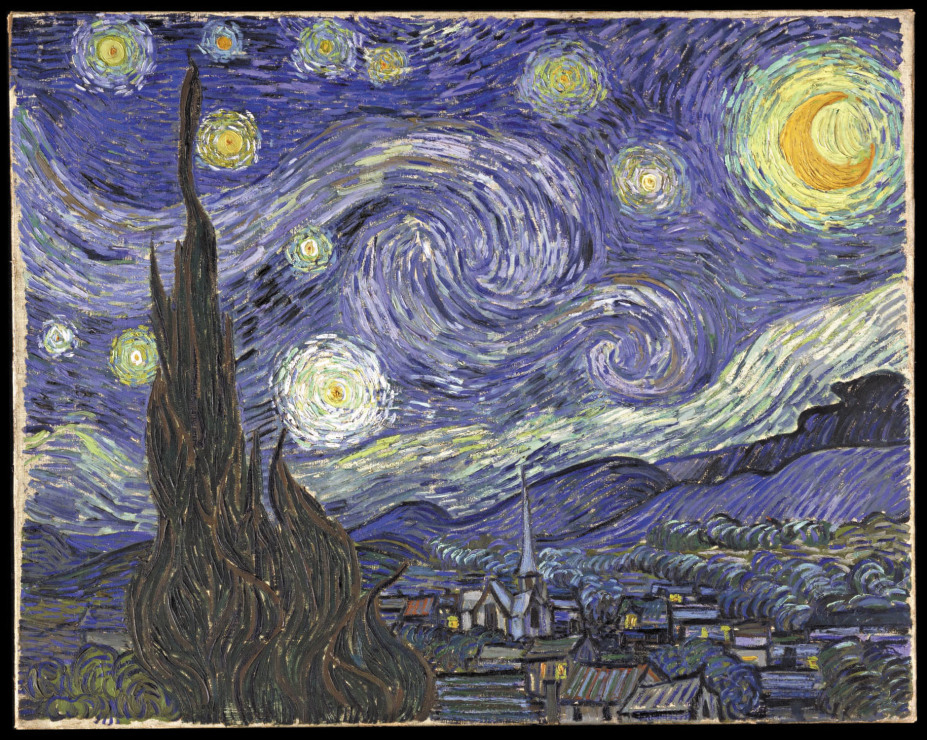
The Starry Night is an oil on canvas by the Dutch post-impressionist painter Vincent van Gogh. Painted in June 1889, it depicts the view from the east-facing window of his asylum room at Saint-Rémy-de-Provence, just before sunrise, with the addition of an idealized village. It has been in the permanent collection of the Museum of Modern Art in New York City since 1941, acquired through the Lillie P. Bliss Bequest. It is regarded as among Van Gogh's finest works, and is one of the most recognized paintings in the history of Western culture.
Source: https://en.wikipedia.org/wiki/The_Starry_Night
2.)Gustav Klimt The Kiss - 1907 and 1908
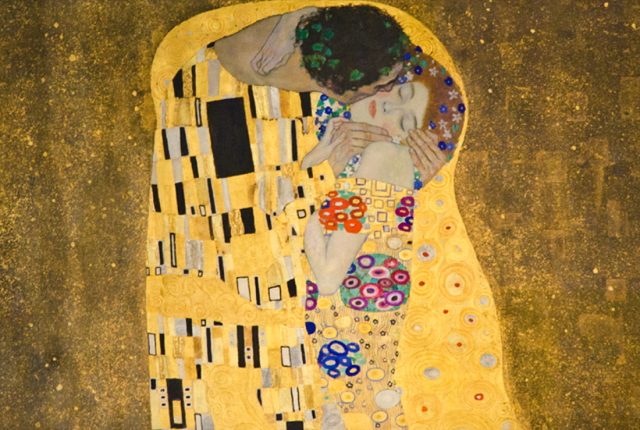
The Kiss (Lovers) was painted by the Austrian Symbolist painter Gustav Klimt between 1907 and 1908, the highpoint of his "Golden Period", when he painted a number of works in a similar gilded style. A perfect square, the canvas depicts a couple embracing, their bodies entwined in elaborate robes decorated in a style influenced by both linear constructs of the contemporary Art Nouveau style and the organic forms of the earlier Arts and Crafts movement. The work is composed of oil paint with applied layers of gold leaf, an aspect that gives it its strikingly modern, yet evocative appearance. The painting is now in the Österreichische Galerie Belvedere museum in the Belvedere palace, Vienna, and is widely considered a masterpiece of the early modern period. It is a symbol of Vienna Jugendstil—Viennese Art Nouveau—and is considered Klimt's most popular work.
Source: https://en.wikipedia.org/wiki/The_Kiss_(Klimt)
3.) Picasso's Guernica - 1937
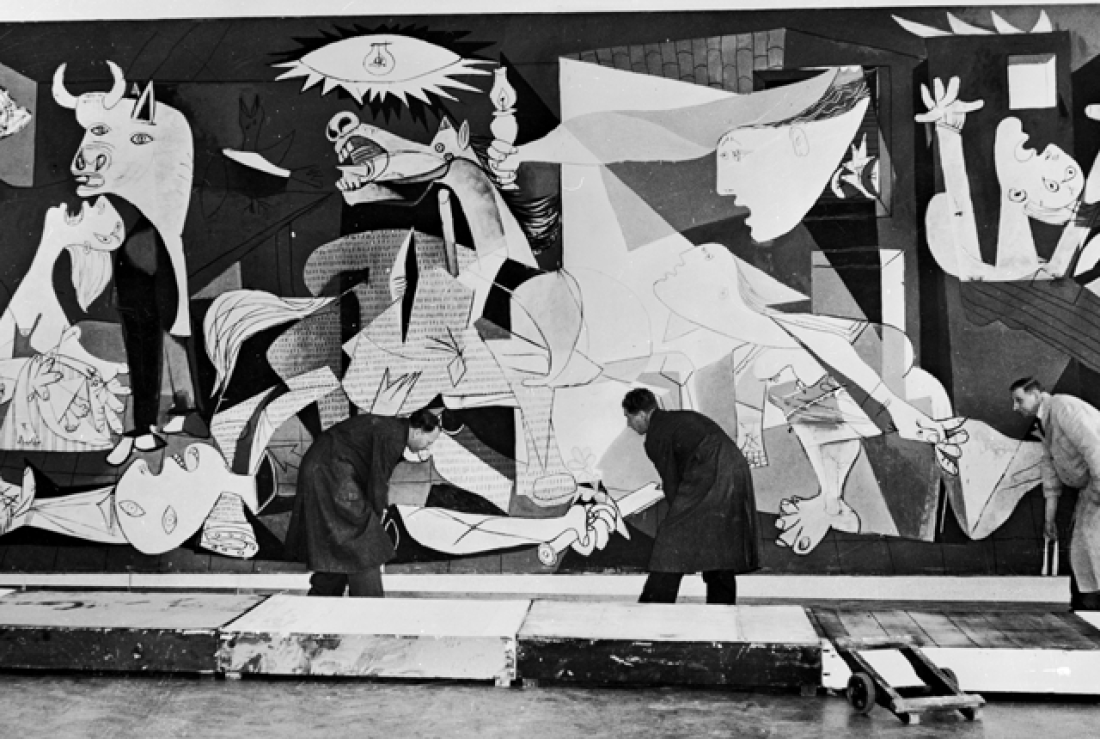
Guernica is a mural-sized oil painting on canvas by Spanish artist Pablo Picasso completed in June 1937, at his home on Rue des Grands Augustins, in Paris. The painting, which uses a palette of gray, black, and white, is regarded by many art critics as one of the most moving and powerful anti-war paintings in history. Standing at 3.49 meters (11 ft 5 in) tall and 7.76 meters (25 ft 6 in) wide, the large mural shows the suffering of people wrenched by violence and chaos. Prominent in the composition are a gored horse, a bull, and flames.
The painting was created in response to the bombing of Guernica, a Basque Country village in northern Spain, by Nazi Germany and Fascist Italian warplanes at the request of the Spanish Nationalists. Upon completion, Guernica was exhibited at the Spanish display at the Exposition Internationale des Arts et Techniques dans la Vie Moderne (Paris International Exposition) in the 1937 World's Fair in Paris and then at other venues around the world. The touring exhibition was used to raise funds for Spanish war relief. The painting became famous and widely acclaimed, and it helped bring worldwide attention to the Spanish Civil War.
Source: https://en.wikipedia.org/wiki/Guernica_(Picasso)
4.) Van Gogh Cafe Terrace at Night - 1888
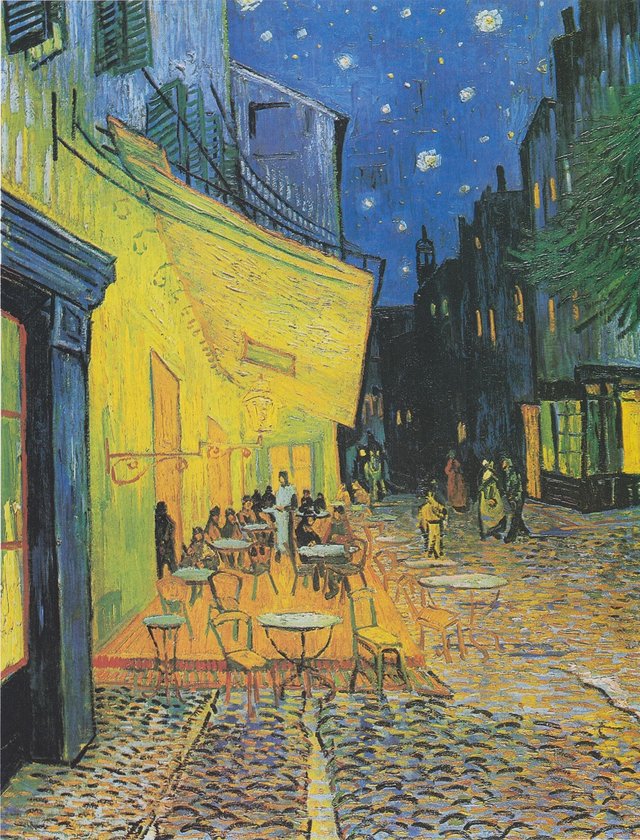
Café Terrace at Night, also known as The Cafe Terrace on the Place du Forum, is an oil painting executed by the Dutch artist Vincent van Gogh while at Arles, France, in mid-September 1888. The painting is not signed, but described and mentioned by the artist in three letters.
Visitors to the site can still stand at the northeastern corner of the Place du Forum, where the artist set up his easel.He looked south towards the artificially lit terrace of the popular coffee house, as well as into the enforced darkness of the rue du Palais leading up to the building structure (to the left, not pictured) and, beyond this structure, the tower of a former church (now Musée Lapidaire). Towards the right, Van Gogh indicated a lighted shop as well, and some branches of the trees surrounding the place—but he omitted the remainders of the Roman monuments just beside this little shop.
The painting is currently at the Kröller-Müller Museum in Otterlo, Netherlands.
Source: https://en.wikipedia.org/wiki/Caf%C3%A9_Terrace_at_Night
5.) Jackson Pollock's No. 5 - 1948
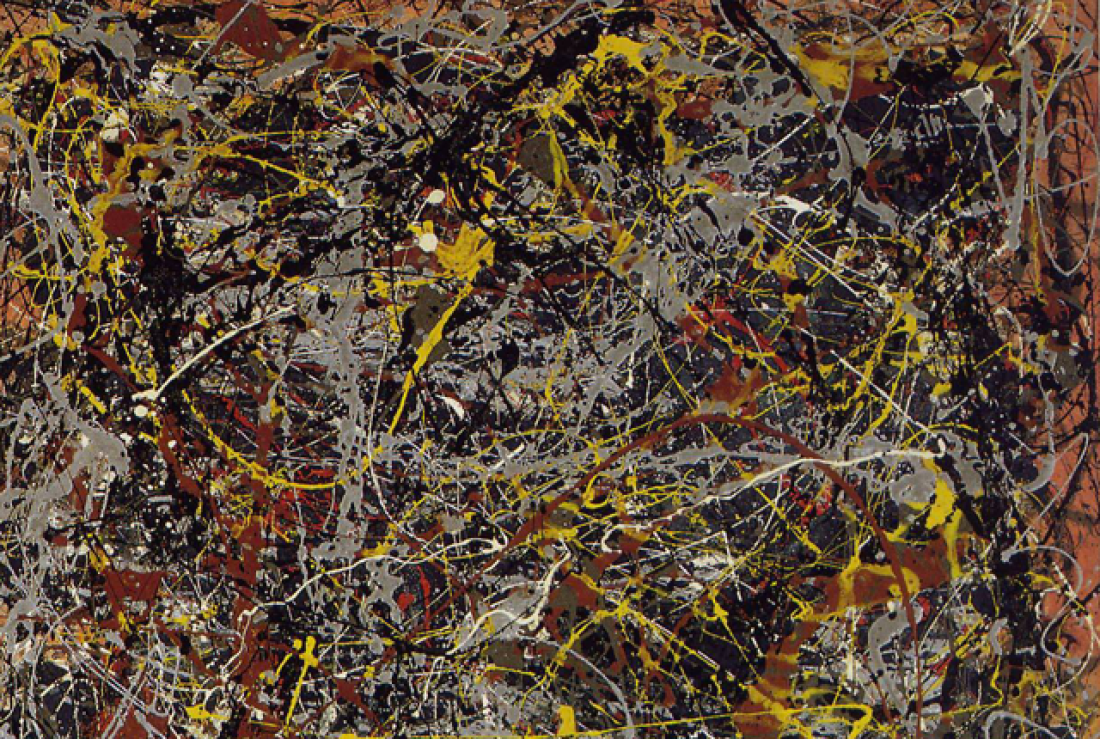
No. 5, 1948 is a painting by Jackson Pollock, an American painter known for his contributions to the abstract expressionist movement.
In the wake of World War II, New York City artists like Pollock, Barnett Newman, and Willem de Kooning began pushing the boundaries of their paintings in a direction that would be dubbed "Abstract Expressionism" by art critic Robert Coates in 1946. This wave of modern art made New York the center of the art world, thanks in part to the movement's embrace by esteemed collector and patron Peggy Guggenheim. Pollock's contribution was his drip paintings, of which No. 5, 1948 is his most famous.
Source: https://en.wikipedia.org/wiki/No._5,_1948 and Mentalfloss

.gif)